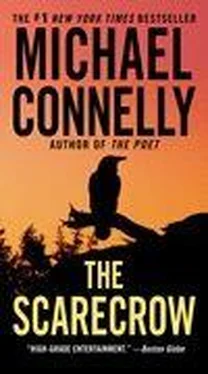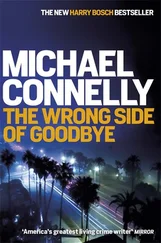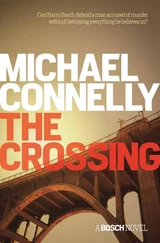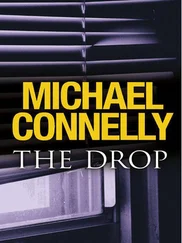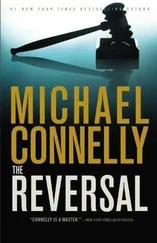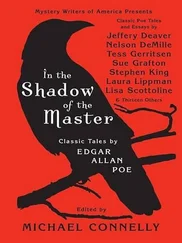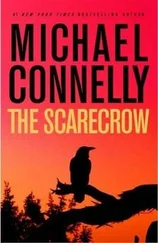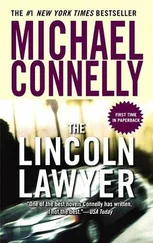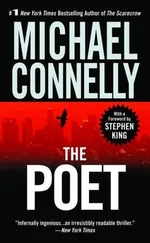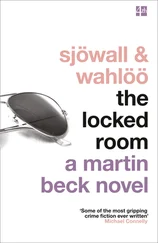He paused there and seemed to go off on some internal flight of thought. I thought the judge might step in again here because, statute of limitations notwithstanding, Lankford had certainly now confessed to a crime. But the judge remained as still as every other person in the courtroom.
“After that, what?” I prompted.
It was a mistake. It brought Lankford back angry.
“What, you want me to draw you a picture? He had me. You understand what I’m saying? He owned me. This little hotel thing wasn’t the first time he used me or told me what to do. There were other times. A lot of other times. He treated me the way he treated his snitches.”
I nodded and looked down at my notes. I knew the case was over. I didn’t need to bring back Marco or put any of the other witnesses on. Moya, Budwin Dell—none of them were needed, none of them mattered. The case ended right here.
Lankford had his head down so no one could see his eyes.
“Investigator Lankford, did you ever ask Agent Marco what happened that night to Gloria after you gave him her address?”
Lankford nodded slowly.
“I asked him point-blank if he killed her, because I didn’t want that on my conscience. He said no. He said he went to the apartment, but when he got there she was already dead. He said he set the fire because he didn’t know if she had anything that would link him to her. But he claimed she was already dead.”
“Did you believe him?”
Lankford paused before answering.
“No,” he finally said. “I didn’t.”
I paused. I wanted to hold the moment for the rest of my life. But then finally I looked up at the judge.
“Your Honor, I have no further questions.”
I passed behind Forsythe on the way to the defense table. He remained in his seat, apparently still deciding whether to mount a cross-examination or simply ask the judge to dismiss the case. I sat down next to Jennifer and she whispered urgently in my ear.
“Holy shit!”
I nodded and leaned toward her to whisper back when I heard Lankford speak from the witness stand.
“My son is older now and he’ll be okay.”
I turned back to see who he was talking to, but he was bent over in the witness stand and obscured by the wood paneling. It looked like he was reaching down to something that had fallen to the floor.
Then, as I watched, Lankford sat up straight and brought his right hand up to his neck. I saw his fingers wrapped around a small pistol—a boot gun. Without hesitation he pressed the muzzle into the soft skin under his chin and pulled the trigger.
The muffled pop from the gun brought a shriek from the jury box. Lankford’s head snapped back and then forward. His body listed slowly to the right and then dropped down behind the front panel of the witness stand out of sight.
Screams of horror and fear came from all over the courtroom, though Jennifer Aronson never made a sound. Like me, she sat there speechless, staring at what now appeared to be the empty witness stand.
The judge started shouting for the courtroom to be cleared, though even her high-pitched and panicked tenor drifted into the background for me. Soon it was as though I couldn’t hear a thing.
I looked over at the jury box and saw my alpha, Mallory Gladwell, standing with her eyes closed, hands pressed against her open mouth. Behind her and to either side of her, other jurors were reacting to the horror of what they had just witnessed. I will always remember the composition of that scene. Twelve people—the gods of guilt—trying to unsee what they all had just seen.
Part 4
The Gods of Guilt
Monday, December 2
Closing Argument
The Gloria Dayton case is long over. Six months later, its ripples on the surface of my life still move with a current all their own. The trial ended, of course, when Lankford pulled his backup gun and took his own life in front of the jury. Judge Leggoe declared a mistrial, and the case went no further than Department 120. Unsurprisingly, the District Attorney’s Office chose to dismiss all charges against Andre La Cosse, citing the “likelihood” of his innocence and other extenuating circumstances. Of course, no one at the DA’s Office or the LAPD admitted they flat out got it wrong from the start.
After his release, Andre was transferred to Cedars-Sinai, where he was treated by the best of the best, underwent more surgeries, and recuperated for six weeks in state-of-the-art medical surroundings. I sent every invoice that came from a doctor or the hospital to Damon Kennedy at the DA’s Office. I never heard back.
When Andre finally left the hospital, he walked with a cane, and he likely always will. Grateful for the outcome of the criminal case, he agreed to allow me to handle a civil claim against the city and county, seeking damages for his wrongful arrest and incarceration and the physical and mental harm to him that resulted. Neither of the defendant governments wanted to go anywhere near a courtroom with the case, and we negotiated a settlement. I started by demanding a million dollars for every stab wound my client suffered but ultimately we settled for $2.4 million on top of all the medical bills.
My cut amounted to the biggest single paycheck in the history of Michael Haller & Associates. I gave bonuses to everyone on the defense team and sent a check for a hundred thousand to Earl Briggs’s mother. I thought it was the least I could do.
That still left me more than enough for a three-week Hawaii vacation with Kendall and to buy a pair of Lincoln Town Cars. One was to use immediately, one to save for the years ahead. They were both low-mileage 2011 models, the last production year of the luxury model’s thirty-year run.
For a while after the trial, I couldn’t catch a break in the public relations department. I was once again vilified in the media and the courthouses, this time as the guy who went after a witness so hard and viciously that he killed himself on the stand. But eventually my reputation was saved by a three-part series that ran in the Times in September under the headline “The Trials of an Innocent Man.” The stories exhaustively detailed the trial, the attack, and the ongoing rehabilitation and recovery of Andre La Cosse. I came out looking pretty good in the stories as the lawyer who believed in his client’s innocence and did what he had to do to win his freedom.
The articles went a long way toward securing the financial settlement with the city and county. They went even further with my daughter. After reading the newspaper series, she tentatively opened communication with me again. We talk and text a couple times a week now and I have driven out to Ventura to watch her ride in equestrian competitions.
Where the articles didn’t help me was with the California bar. An investigator with the professional ethics unit opened a file on me shortly after publication of part two in the Times. That report interviewed the doctors who treated Andre after the stabbing and raised serious questions about whether Andre could have possibly been conscious and of clear mind when he supposedly signed the waiver of appearance I had brought to his bedside at County/USC. The bar investigation is ongoing but I’m not worried. Andre came through with a notarized statement attesting to my legal acumen and recounting how he knowingly signed the document in question.
My other one-time client Hector Arrande Moya was both a winner and loser in the course of the year. Sly Fulgoni Jr., with tutoring from me as well as from his father, won the habeas case, and Moya’s life sentence was vacated by the U.S. District Court. But upon his release from the prison in Victorville, he was immediately taken into custody by immigration officials and deported as an undesirable to Mexico.
Читать дальше
